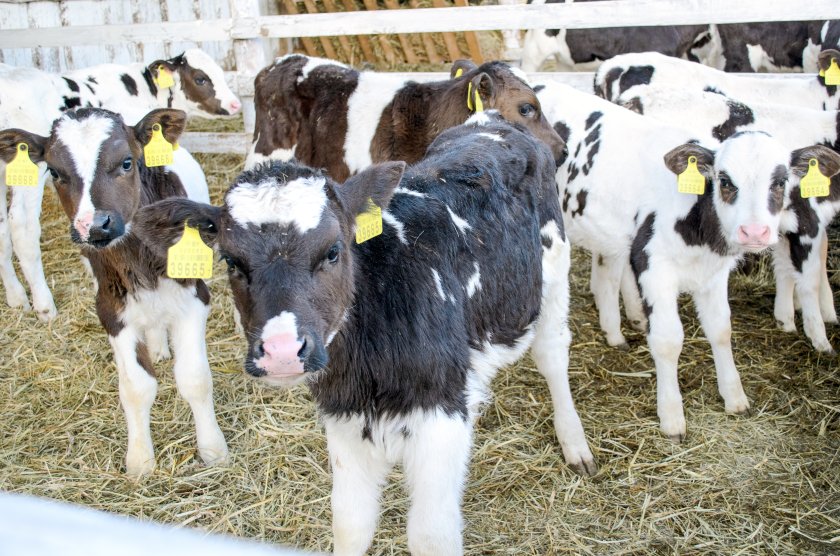
A project will support a Denbighshire dairy farm adapt its dry cow management and feeding strategy in a bid to reduce calvings at night.
Bryn Farm, located in Tremeirchon, is shifting the calving pattern in its 90-cow herd from an all year round system to an autumn block.
The move could be challenging on the family-run system if there is a high proportion of cows that calve at night.
Aled Potts, who farms with his uncle Dilwyn Hughes, is working with the Welsh government funded Farming Connect programme on a focus site project.
It will examine if changes made to management and diet in the transition period can increase the number of cows that calve during the day, when labour is more readily available and when more attention can be given to the cow and to colostrum feeding the newborn calf.
Farming Connect dairy technical officer for north Wales, Rhys Davies said there were multiple benefits from having a high proportion of the herd calving during the day.
"Newly calved cows can be individually penned sooner, allowing feeding to take place promptly and therefore, reduce post-calving metabolic problems," he said.
"There is also the advantage of colostrum being quickly taken from the cow and given to the calf and of the colostrum being of higher quality.
"Pressure on farmers is reduced due to less sleep disruption and there are more opportunities for people to be present during the day to spot issues."
At Bryn Farm, cows that are three weeks from calving are being offered fresh forage during the mid to late afternoon while the close-up group is restricted from feeding between 12:00 and 18.30, with access to a straw yard and water only.
Dry cow rolls are offered along with ad-lib access to forage from 18.30 onwards. Enough feed space is critical during this feeding period and a minimum of 85cm/cow feed space should be available across the barrier.
Cows will be followed throughout the lactation to compare yields, fertility and any metabolic issues between cows who calved at different times.
Ruminant nutritionist William McNiece, of Massey Feeds, who has been advising on nutrition at Bryn Farm for four years, is providing input into transition management.
Mr McNiece said there is huge pressure on the cow at calving, from a combination of diet change, giving birth to a calf and producing milk.
“When a cow produces 30-35 litres of milk a day she is using the equivalent amount of energy as a human running a marathon and she is doing that every day," he said.
To prepare the cow for this, a body condition score (BCS) of 3.25-3.5 must be maintained for 100 days before drying off.
“Gaining condition during the dry period is a fool’s game because cows lay down fat around the internal organs," said Mr McNiece.
He urged farmers not to forget the low yielders. “There can be a tendency to provide them with grass and 2kg of cake and leave them to get on with it but management needs to be more careful than that."
Checking mineral status is vital as, because concentrate intakes are reduced, so too will the mineral provided through this feed route.
“Take bloods and check the cow’s mineral status to adapt her mineral intake for the next lactation," he added.
Optimising dry matter intake (DMI) in the dry period is important because, the more a cow eats, the more BCS she will hold onto and the more milk she will produce post-calving.
“There are massive links between DMI in the calving period and DMI post-calving," Mr McNiece explained.
“A DMI intake of 13-14kg in the transition period is worth an extra 1-2 litres at peak lactation. That is an easy financial win."
He recommended separating at-risk cows prior to calving and feeding them appropriately – these might be cows that are lame or over-conditioned. “Take the stress off them," he said.
Diet in the dry cow period has the most influence on milk fever prevention. Mr McNiece favours feeding a negative dietary cation to anion difference (DCAD) diet in the close-up period or calcium binders.
